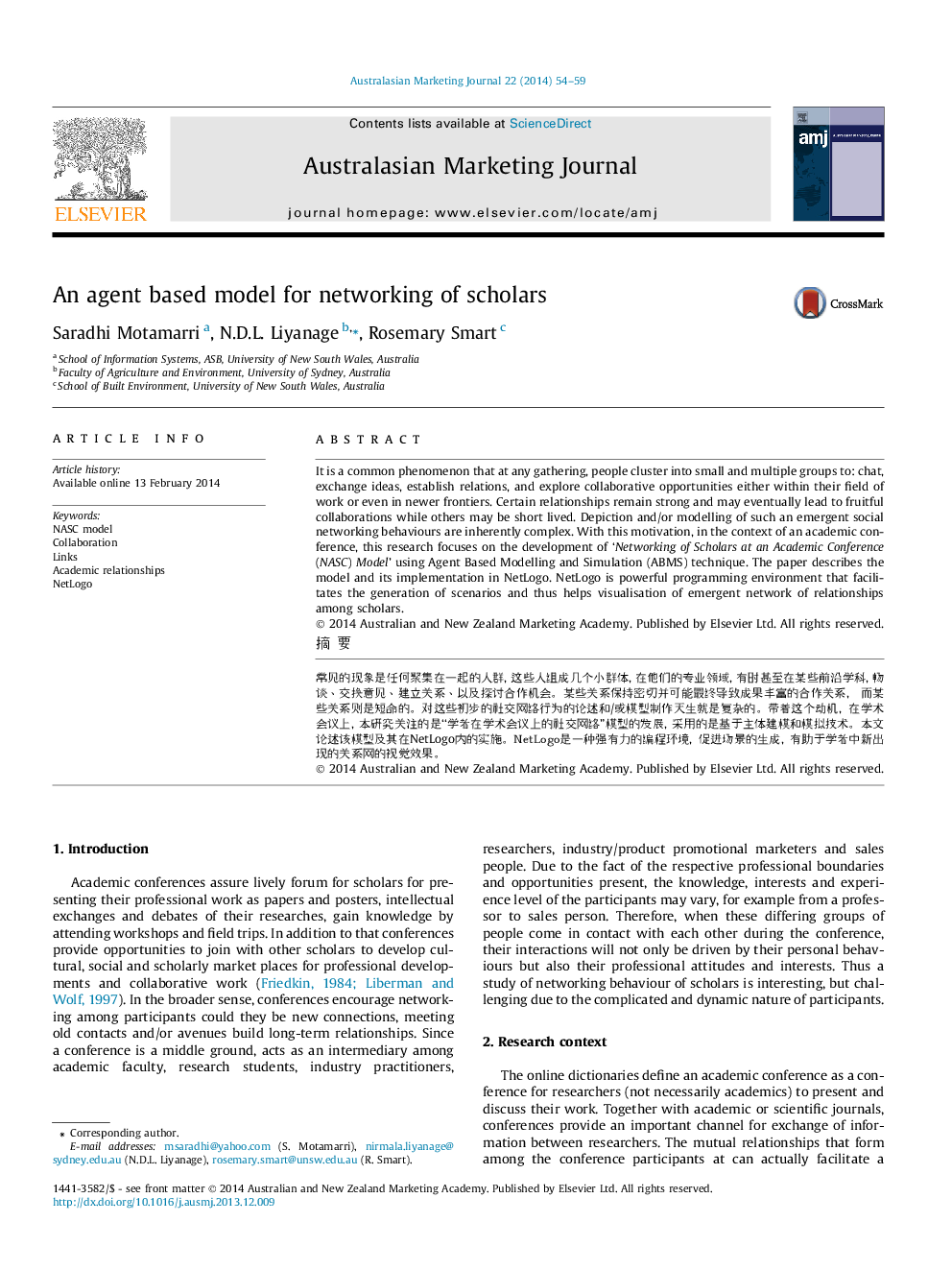| Article ID | Journal | Published Year | Pages | File Type |
|---|---|---|---|---|
| 1027027 | Australasian Marketing Journal (AMJ) | 2014 | 6 Pages |
摘要常见的现象是任何聚集在一起的人群, 这些人组成几个小群体, 在他们的专业领域, 有时甚至在某些前沿学科, 畅谈、交换意见、建立关系、以及探讨合作机会。某些关系保持密切并可能最终导致成果丰富的合作关系, 而某些关系则是短命的。对这些初步的社交网络行为的论述和/或模型制作天生就是复杂的。带着这个动机, 在学术会议上, 本研究关注的是“学者在学术会议上的社交网络 ”模型的发展, 采用的是基于主体建模和模拟技术。本文论述该模型及其在NetLogo内的实施。NetLogo是一种强有力的编程环境, 促进场景的生成, 有助于学者中新出现的关系网的视觉效果。
It is a common phenomenon that at any gathering, people cluster into small and multiple groups to: chat, exchange ideas, establish relations, and explore collaborative opportunities either within their field of work or even in newer frontiers. Certain relationships remain strong and may eventually lead to fruitful collaborations while others may be short lived. Depiction and/or modelling of such an emergent social networking behaviours are inherently complex. With this motivation, in the context of an academic conference, this research focuses on the development of ‘Networking of Scholars at an Academic Conference (NASC) Model’ using Agent Based Modelling and Simulation (ABMS) technique. The paper describes the model and its implementation in NetLogo. NetLogo is powerful programming environment that facilitates the generation of scenarios and thus helps visualisation of emergent network of relationships among scholars.
